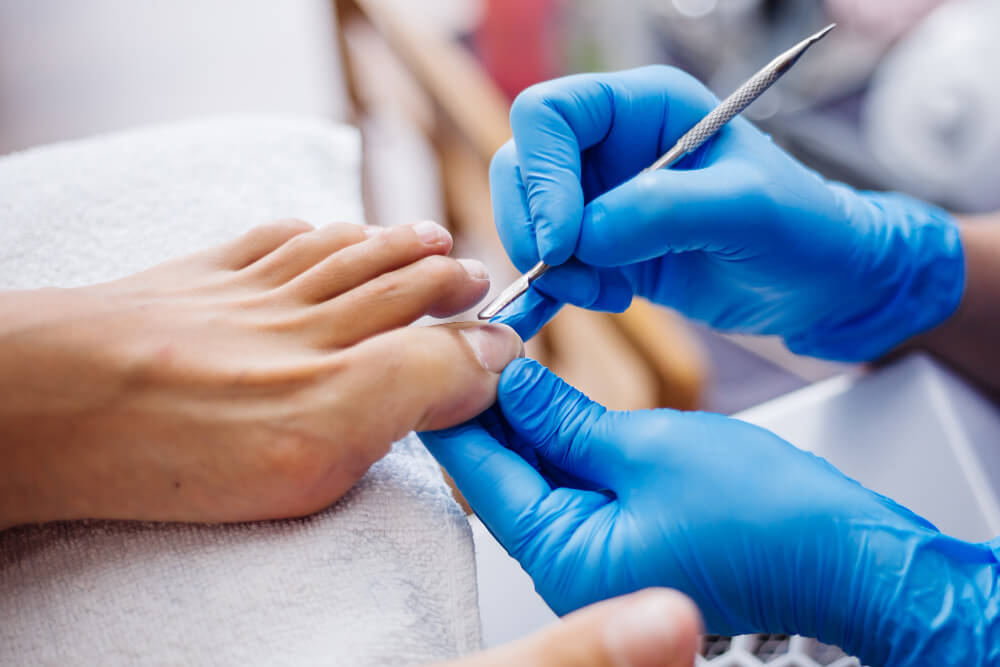Podiatry: The Key to Healthy Toenails
Toenails, while often overlooked, play a vital role in overall foot health. However, various conditions, such as ingrown toenails, fungal infections, or trauma, can affect toenail health and cause discomfort. In such cases, podiatrists, foot and ankle specialists, are well-equipped to perform toenail surgery to alleviate pain and restore foot health.

Common Toenail Conditions Requiring Surgery
Several toenail conditions may necessitate surgical intervention:
Ingrown Toenails
An ingrown toenail occurs when the edge of a toenail grows into the skin, causing pain, inflammation, and sometimes infection. Podiatrists can perform a simple procedure to remove the ingrown portion of the nail and prevent recurrence.
Fungal Nail Infections
Fungal infections, such as onychomycosis, can cause the toenails to become thick, discolored, and brittle. In severe cases, surgical removal of the infected nail may be necessary, followed by antifungal medication.
Toenail Trauma
Trauma to the toenail, such as a forceful impact or injury, can lead to nail damage or deformity. In some cases, surgical intervention may be required to repair the damaged nail or remove the affected portion.
The Toenail Surgery Procedure
Toenail surgery is a relatively minor procedure that is typically performed in a podiatrist’s office under local anesthesia. The specific procedure will vary depending on the underlying condition.
Ingrown Toenail Surgery
The podiatrist will numb the affected area with local anesthesia and then carefully remove the ingrown portion of the nail using a specialized tool. In some cases, a small piece of tissue may be removed to prevent the nail from growing back into the skin.
Fungal Nail Surgery
For fungal nail infections, the podiatrist may perform a partial or total nail avulsion. This involves removing the infected portion or the entire nail. In some cases, a chemical solution may be applied to the nail bed to kill any remaining fungus.
Trauma-Related Nail Surgery
For trauma-related nail injuries, the podiatrist may need to repair the damaged nail or remove a portion of the nail. In some cases, a nail avulsion may be necessary followed by nail reconstruction.
Post-Operative Care

After toenail surgery, it is important to follow your podiatrist’s instructions carefully to ensure proper healing and prevent infection. Some common post-operative care instructions include:
- Keep the foot clean and dry: Wash the foot daily with mild soap and water and pat it dry thoroughly.
- Apply topical antibiotics: Your podiatrist may prescribe antibiotic ointment to prevent infection.
- Wear comfortable shoes: Avoid tight-fitting shoes that can put pressure on the affected toe.
- Elevate the foot: Elevating the foot can help reduce swelling.
- Avoid soaking the foot in water: Soaking the foot in water can increase the risk of infection.
- Follow up with your podiatrist: Schedule follow-up appointments to monitor the healing process.
Potential Complications
While toenail surgery is generally safe, there are potential complications, such as:
- Infection: Proper hygiene and antibiotic treatment can help prevent infection.
- Bleeding: Minor bleeding is common, but excessive bleeding may require medical attention.
- Pain: Pain is a common side effect, but it can usually be managed with over-the-counter pain medication.
- Nail deformity: In some cases, the nail may grow back deformed.
Conclusion
Toenail surgery is a safe and effective procedure that can alleviate pain and improve foot health. By seeking the expertise of a qualified podiatrist, individuals can receive appropriate diagnosis and treatment for toenail conditions.
Schedule an appointment with our Podiatrist for nail surgery (469) 496-2456 Or visit us https://texasspecialtyclinic.com/
